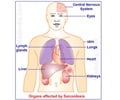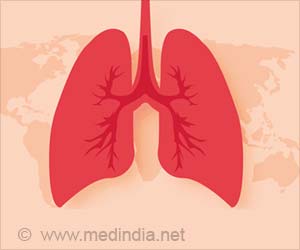An innovative method that can light up a person's lungs and speed up the diagnosis of lung disease has been developed by researchers at the University of Sheffield.
The researchers believe that the new technology would result in earlier diagnosis of emphysema and smoking related damage.In the new technique the person inhales small amounts of harmless hyperpolarised (HP) noble gases (Helium-3 and Xenon-129), which are then imaged inside an MRI scanner.
The gases are hyperpolarised using high power lasers by a process called optical pumping. The high-resolution images of the airspaces that are produced offer additional functional information, which is currently not available with traditional X-rays and lung CT scans.
The images obtained during clinical trials have so far shed light on a variety of different lung conditions and diseases and trials carried out on smokers, for example, have shown signs of early emphysema.
"The images produced are providing clinicians with functional information of the lungs that has previously been unattainable. The high sensitivity of the technology means that it offers real hope for detecting lung damage early," said Jim Wild, a physicist from the University´s Academic Unit of Radiology and the lead academic involved in the project.
"Being able to detect lung conditions and disease at an early stage could radically affect the lifespan and quality of life of patients," he added.
Advertisement
"For children with cystic fibrosis it means that, with the right treatment, they could live longer," Wild said.
Advertisement
The study was funded by Engineering and Physical Science Research Council (EPSRC), the Department of Health and the European Union.
Source-ANI
RAS/L









